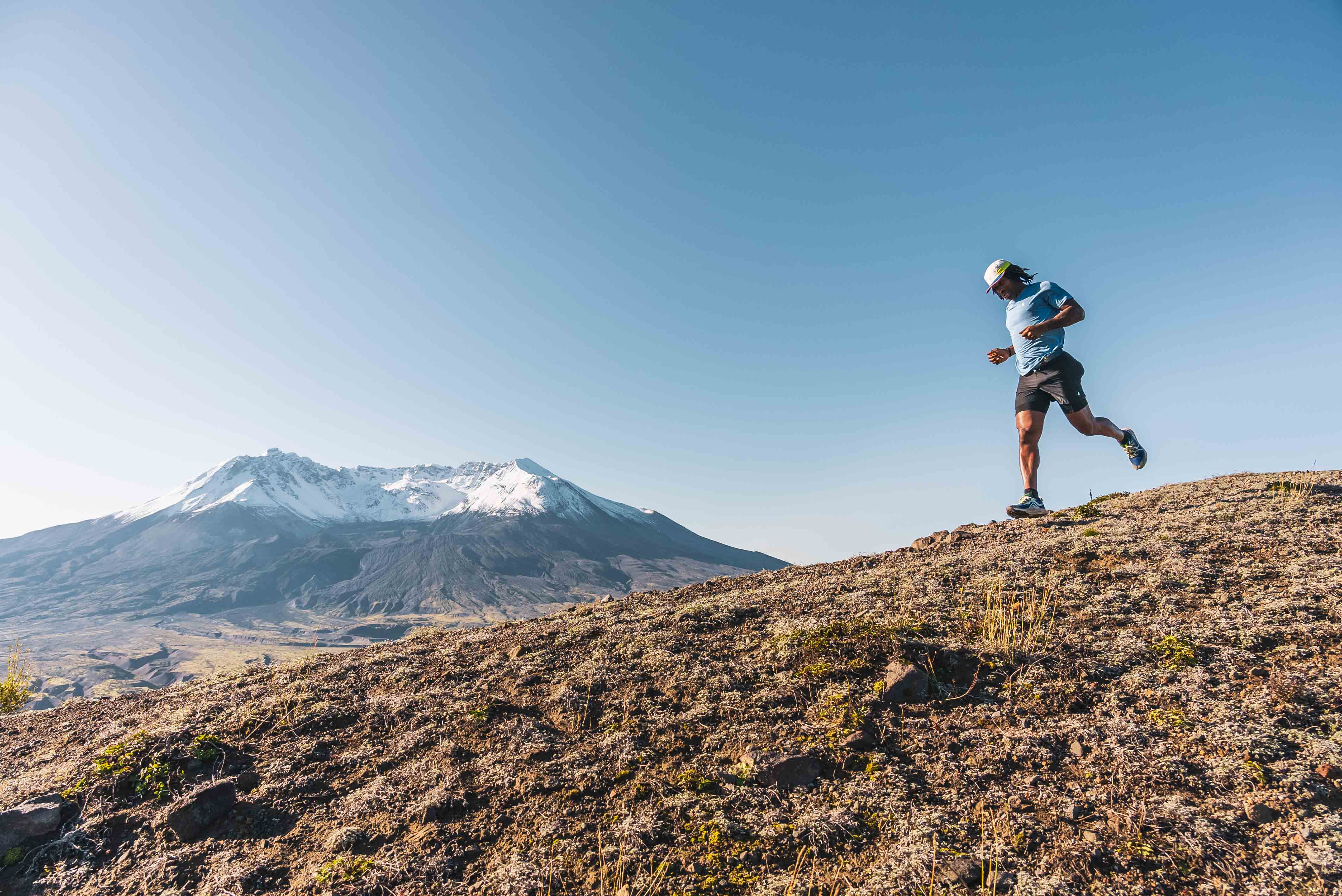Downhill Running

By Andrew Miller
Downhill running is often overlooked in training because it is less aerobically challenging than running uphill or running on flat terrain. Because it feels easier, most runners see downhills as a chance to recover before the next climb. However, downhills are a great place to go faster without much extra effort. And on race day it doesn’t matter if you are gaining time on the toughest uphill on the course or a gentle downhill. Here’s what to do to become a better downhill runner.
First off, you will need to set aside time to practice downhill running. The goal of this run is to build your downhill speed which means you will be practicing running downhill fast! Do note that fast downhill running is hard on your quads so you may be a little sore after the first few downhill specific training runs. The soreness will go away after a few runs as your legs get stronger and more adapted to downhill running. However, due to the strain that downhill running puts on your legs, stick to one downhill session per week. More frequent downhill training may not give you legs enough time to recover.
When running downhill on trails, there are two limiting factors that affect your speed: your maximum speed and the percentage of your maximum speed that you can run on trails. Here is an example to help illustrate this. Let’s say you can run down a road at 8 mph. This is your maximum speed for that grade. For a trail with the same grade, you may only be able to run downhill at 6 mph. This means you can only run at 75% of your maximum speed on trails. The two ways to improve your downhill trail running are to increase your maximum downhill speed or increase the percentage of your maximum speed that you can maintain on a trail. Whether you increase your maximum speed or your trail percentage, both will increase your downhill trail running speed, so we will talk about strategies to work on both.
Improving your maximum speed and your trail percentage will require similar training. If you feel slow running downhills, regardless of the surface, focus on your maximum speed first. To improve your maximum downhill speed, find a sustained downhill. A downhill that is at least 0.5 miles long with roughly a 10% grade is a good place to start. Choosing a steeper or shallower downhill may be advisable depending on your skill level. Generally, steeper downhills are harder to run.
For your first downhill session, aim to accumulate 10 minutes of fast downhill running. Before you start running downhill, make sure you have been running for at least 20 minutes to ensure that your legs are properly warmed up. The 10 minutes of downhill running can be done in one single downhill or multiple downhills. Aim for downhills at least 5 minutes long. The downhill should be run at a very fast pace, but still under control. Do not be reckless when running fast downhill! There is a good chance that you will be sore the next day. Each week, you can add 1 or 2 minutes of fast downhill running to your downhill training session until you hit 20 minutes. Do not go beyond 20 minutes. You will begin to lose focus on the downhill and run slower. Additionally, it will become very difficult for your legs to recover in an appropriate amount of time.
Training to improve the percentage of your maximum speed that you can run on a trail will require similar training. Use the same progression of beginning with 10 minutes and building to 20 minutes of fast downhill running. Instead of selecting a road for your downhill training, pick a trail. It can be tempting to choose the most technical trail possible, but this is usually not the best choice. If the downhill you choose is too technical, it will be too difficult to run fast and your downhill training will be less productive. Aim for a downhill that is challenging, but still allows you to run at a fast pace. Here are a few pointers for running fast downhill on trails: look ahead so you can plan your route down the trail, take short quick steps in steep or technical terrain, stride out on smoother, gentler terrain.
Downhill running is a great way to gain time in a race. To improve your downhill running, it is essential to practice running downhill. Use the guidelines above to help guide your downhill training. If you have questions, please send them to info@andrewmillercoaching.com